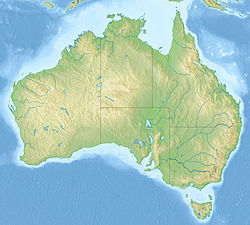| Marree Subgroup | |
|---|---|
| Stratigraphic range: Aptian-Albian [1] | |
| Type | Subgroup |
| Unit of | Rolling Downs Group |
| Sub-units | Bellinger Sandstone, Bulldog Shale, Coorikiana Sandstone, Oodnadatta Formation |
| Underlies | Mackunda & Winton Formations |
| Overlies | Parabarana Sandstone, Cadna-owie Formation |
| Lithology | |
| Primary | Siltstone |
| Other | Gravel, conglomerate, shale, clay |
| Location | |
| Coordinates | 30°26′0″S137°10′0″E / 30.43333°S 137.16667°E |
| Approximate paleocoordinates | 57°06′S117°18′E / 57.1°S 117.3°E |
| Region | South Australia |
| Country | Australia |
| Extent | Eromanga Basin |
| Type section | |
| Named for | Marree |
| Named by | Forbes |
| Year defined | 1966 |
The Marree Subgroup, previously described as Maree Formation and Marree Formation, is a geological subgroup in the Eromanga Basin of South Australia whose strata date back to the Aptian. The subgroup was first described as a formation by Forbes in 1966. [2] [3] Dinosaur remains are among the fossils that have been recovered from the formation. [1]
Contents
An opalised plesiosaur specimen of the genus Umoonasaurus has been nicknamed 'Eric' and was described in 1998 by Schroeder. [4] The decapod crab Dioratiopus salebrosus was described in 1980. [5]

